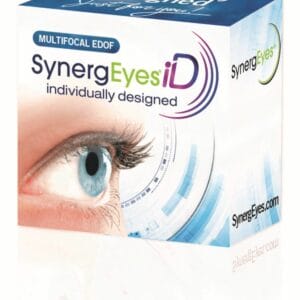December 8, 2023
Roadblocks can occur when fitting patients with contact lenses even after you’re gone through all the necessary steps, including history, motivation, refractive status, education, expectations, ocular surface evaluation, lens selection, and all the other pieces to the puzzle. When the patient has finally gotten the lenses on the eye and had ample time to settle, something just ain’t right and the patient isn’t thrilled with their vision or comfort. Here are some ways to troubleshoot the multifocal lens process.
Follow the Fitting Guide
If you are a follower of this Contact Lens section of Review of Presbyopia and the Aging Eye, you’d notice we love a contact lens fitting guide. You should too as it is the best place to start. So, if you aren’t starting by following the manufacturer’s recommended place to start, we’d refer back to that for your initial lens selection. For the first enhancement, each process is different. Some start with adding +0.25/-0.25 flippers, some change add powers, some keep adding more plus to the equation, so make sure you’re fully versed on the appropriate steps.
One of the things we appreciate most about the newer technologies is that we see success come quicker. From research done by each manufacturer, we see high success rates with one or two lenses per eye. The flip side to this is that we also see failure come even quicker. If a patient isn’t somewhat functional at distance and near with the first lens, we can go ahead and switch designs because we need to start at a place of functionality. Now we’ve saved at least one or two more lenses, which can add up to 20 minutes of wasted time trying to make this lens work.
The Ghosting Phenomenon
Ghosting isn’t just something the kids do these days when they don’t text you back. Our multifocal lens wearers also complain of this. They may say “it looks 3D” or “the words are coming off the page” or any other fun descriptors we’ve heard over the years. But this is a phenomenon we see often in the clinic. Usually this means the optics aren’t working in your favor, and typically it’s too high an add power. In some lenses, we can split the add and go down in the dominant eye, which clears up the vision. In other lenses, we may have started in too much add and can go down while still achieving good near vision. The most common age demographic that we’ve seen have this complaint is the 49 to 54-year-old. They are typically given more plus in their spectacle prescription but may not need as much in a more dynamic visual correction such as contact lenses. They generally can handle a lower add in the contact lenses and still have great functional vision at distance and near.
Emmetropic and Low Hyperopic Expectations
The emmetropic or low hyperopic presbyope is another fun patient who wants to turn back time and see like they did at 20 or even 30 years old. They tend to have the highest expectations when it comes to contact lens wear. We like to start these patients in binocular multifocal wear, but sometimes it can be too much for their visual system. In these patients, we’ve had a lot of success wearing a multifocal contact lens in the non-dominant eye and creating a modified monovision setup where they still have great binocular distance vision.
Fluctuating or blurry vision is a hallmark in ocular surface disease. We’ve seen too many patients where we bumped up the add, but really what they needed was a better tear-surface interface. These patients with ocular surface issues will have complaints of blurry vision even though we’ve tweaked, changed, and explored all our options. Don’t be afraid to take a contact lens holiday to treat the surface in order to get the best vision and comfort possible.
These pearls have paid dividends for us and our patients over the years. They have helped to keep our patients happy in their lenses and given them plenty to rave about outside the exam lane. We hope this will be the missing piece to solve some of those conundrums we all face in our daily practice.





